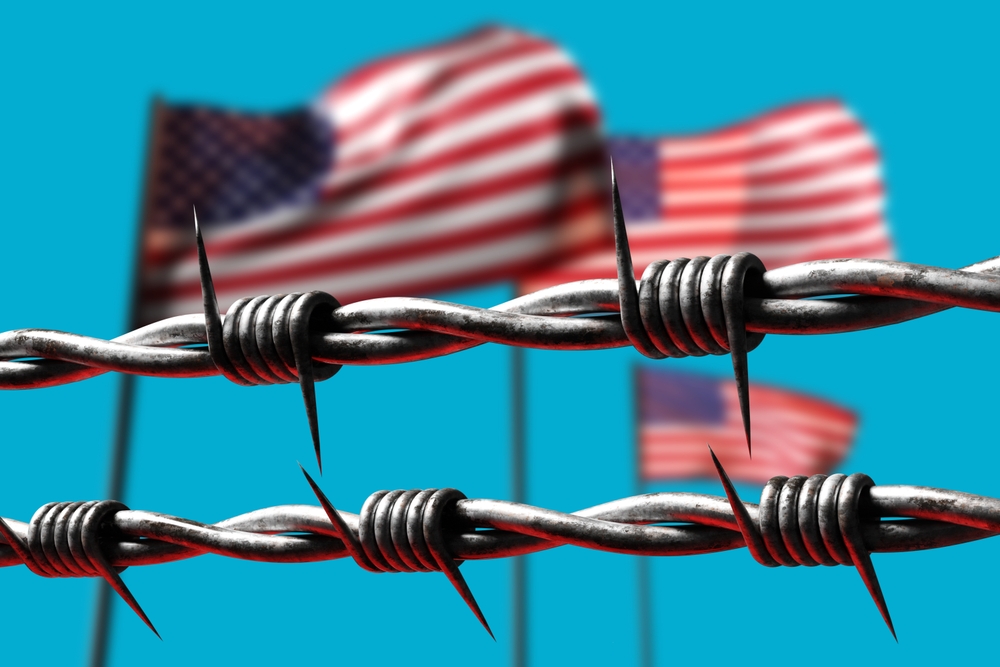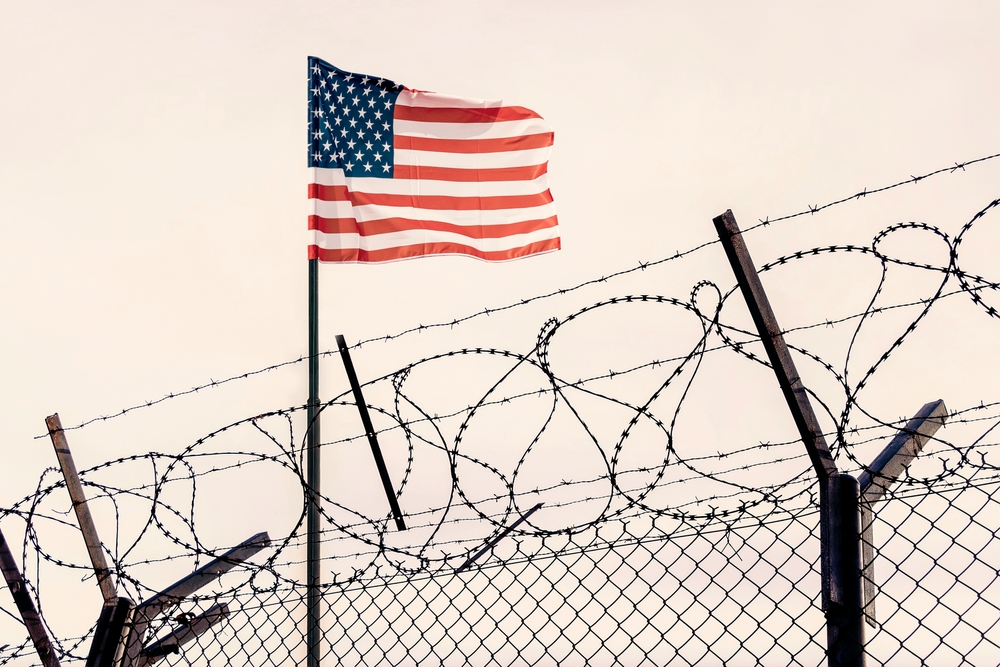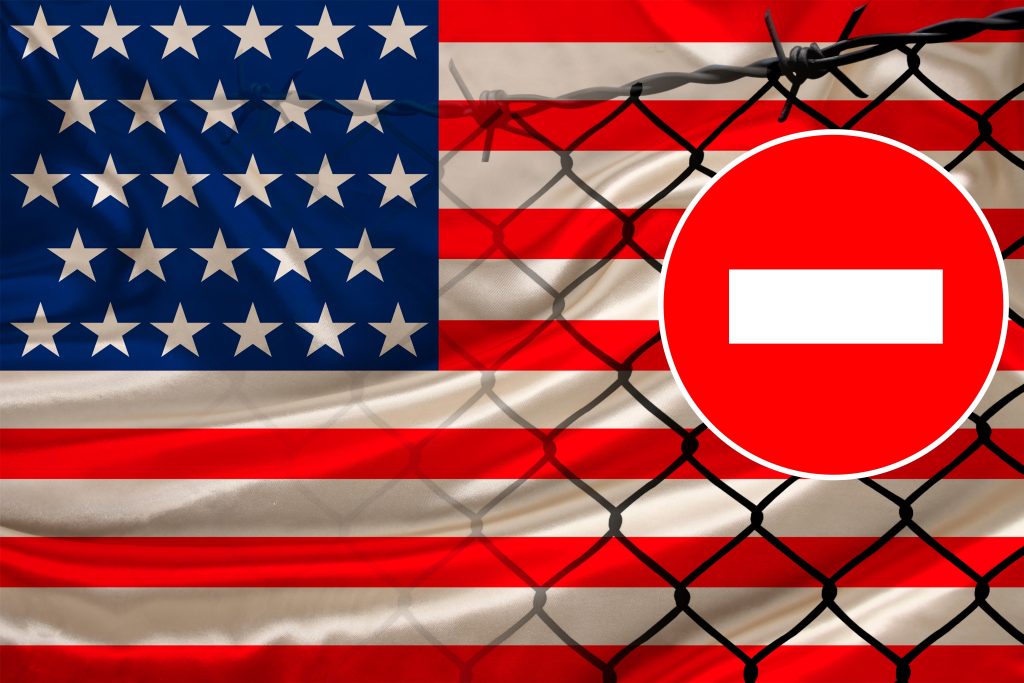Your cart is currently empty!
Disturbing Reason Donald Trump ‘Specifically Requested’ to Have the Mexican Border Painted Black

A fresh coat of paint might seem like the simplest of upgrades something you’d do to brighten a house or freshen a fence. Yet at the U.S. Mexico border, a new paint job has become a matter of national policy. President Donald Trump has ordered the massive steel wall to be painted black, a decision pitched not as cosmetic, but as tactical. The idea is that in the punishing desert heat, black steel will absorb more sun, growing so hot it burns to the touch, and in theory, discourages anyone from attempting to climb it.
The move has reignited one of the most polarizing symbols of Trump’s presidency. To some, it reflects creative problem-solving in the face of persistent migration challenges. To others, it looks more like political theater an expensive gesture unlikely to alter the realities on the ground. As with much of the border wall debate, the question isn’t only whether it works, but what it represents.
The Science Behind the Claim
At its core, Trump’s request rests on a basic principle of physics: dark colors absorb more heat. In the desert regions where much of the southern border wall stands, daytime temperatures often soar above 100 degrees Fahrenheit. Black-painted steel absorbs sunlight and radiates heat more intensely than lighter colors, meaning the surface could, in theory, become scorching to the touch. The administration argues that this added heat would make the wall too uncomfortable to grip and therefore more difficult to scale.
Experts, however, are skeptical about how meaningful this effect might be. Migrants attempting to cross can use gloves, cloth, or makeshift protection to shield themselves from hot surfaces. Others may attempt crossings at night when the desert cools dramatically, rendering the wall’s temperature irrelevant. Border enforcement veterans have also pointed out that many crossings occur with the aid of ladders, ropes, or tools, making the paint less of an obstacle and more of a nuisance.
Beyond deterrence, officials have suggested a secondary benefit: paint may help reduce rust and extend the steel’s lifespan. While that claim has some merit, past attempts raise doubts. When parts of the wall were painted black in 2019, the coating reportedly began peeling in under 18 months, undermining both durability and deterrent value. This history underscores the question of whether science supports the policy or whether symbolism may play a stronger role than engineering.
History of the Idea

The concept of painting the border wall black is not new. During his first term, Donald Trump repeatedly floated the idea of darkening the steel barriers to make them hotter under the desert sun. In 2019, he ordered test segments along the Arizona border to be coated. The experiment was short-lived. By early 2022, less than 18 months later, reporters visiting those sections found the paint peeling and failing to deliver any noticeable improvement in deterrence.
Despite the lackluster results, the proposal has resurfaced in his second term with renewed vigor and far greater resources. The Trump-backed “Big, Beautiful Bill” passed by Congress in July dedicated roughly $46 billion to border security, including wall expansion, technology upgrades, and maintenance. Officials now suggest the black coating will not only create a heat deterrent but also protect against corrosion.
Historically, the wall itself has been as much a political emblem as a physical barrier. When Trump left office in 2021, construction halted with millions of dollars in unused materials abandoned at sites along the border. The return to unfinished business, complete with a high-profile paint strategy, highlights how this project remains a centerpiece of his approach to immigration equal parts policy and symbolism.
Criticism and Public Reaction

The announcement that the border wall would be painted black quickly sparked skepticism and ridicule. Critics questioned not only the strategy’s effectiveness but also the cost. Estimates from earlier proposals suggested painting could cost more than $1 million per mile, meaning a full 1,300-mile stretch could approach $2.7 billion. For opponents, the idea that billions might be spent on paint while gloves or nighttime crossings could easily circumvent the deterrent underscored its impracticality.
Social media reaction was swift and unforgiving. Commentators mocked the plan as “cosmetic theater,” likening it to cartoonish schemes from Wile E. Coyote. Others pointed out that Congress had approved billions in funding for the wall while cutting benefits in other areas, framing the paint job as misplaced priorities. Some dismissed it as emblematic of Trump’s approach: bold, headline-grabbing gestures with limited operational impact.
Even within government circles, doubts have been raised. In 2020, when the idea was first tested, some agency officials acknowledged privately that the push to paint the wall was motivated less by security concerns than by a desire to satisfy the president. Those criticisms have resurfaced, with many observers suggesting the move is less about deterrence and more about symbolism an effort to project toughness on immigration regardless of whether the measure truly works.
Wider Immigration Policy Context

The decision to paint the border wall black is best understood not as an isolated measure, but as part of a broader and evolving immigration strategy. During Trump’s first term, the wall became the physical embodiment of his “tough on immigration” stance, even as large stretches of it remained unfinished. His second term has shifted emphasis toward enforcement inside the United States most notably through stepped-up deportations, high-profile ICE raids, and the designation of military-enforced “National Defense Areas” along 230 miles of the border in New Mexico and Texas.
The recently passed $46 billion “Big, Beautiful Bill” ensures the border wall remains central to that strategy. In addition to painting and maintenance, the funding covers new construction, water-borne barriers, and surveillance technology such as cameras and sensors. Officials have said the government is completing roughly half a mile of wall each day, underscoring the pace of investment.
For Trump and his allies, these measures serve as more than deterrents they function as symbols of sovereignty and order. The wall, whether newly built, reinforced, or freshly painted, projects a message of control at a time when immigration remains a deeply polarizing issue in American politics. In this sense, the paint itself becomes part of a larger narrative: a visual shorthand for toughness, even if its practical impact is contested.
The Politics Behind the Paint
The plan to paint the border wall black illustrates the dual nature of Trump’s immigration strategy equal parts policy and performance. On paper, it leans on science, invoking the heat-absorbing properties of dark paint as a deterrent. In practice, its effectiveness is widely questioned, with critics quick to note cheaper, simpler workarounds. What remains clear is that the wall has never been just about steel and concrete. It is a symbol, wielded to project strength and control, to embody promises of sovereignty, and to galvanize a political base. Whether the paint ultimately peels, as it did in earlier tests, matters less than the message it sends. In that sense, the black wall may stand not as a barrier to migrants, but as another emblem of how immigration policy in America is often defined as much by optics as by outcomes.
